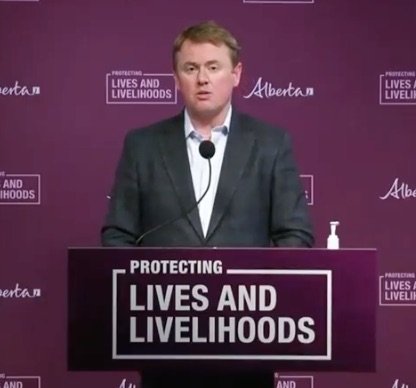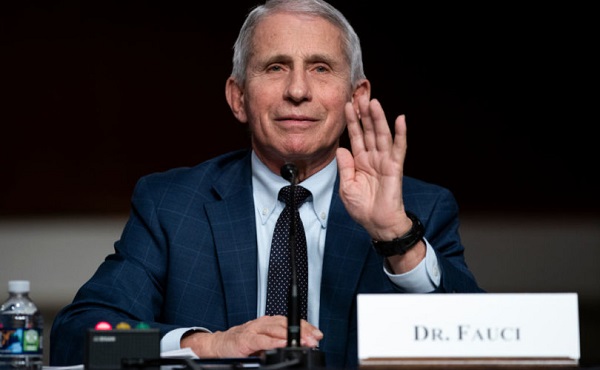Alberta
Province will begin to ease restrictions at long term care homes

Relaxing restrictions on continuing care visits
High rates of vaccination among residents and staff at continuing care facilities means families will soon be able to more easily visit their loved ones.
Starting May 10, updated public health measures will come into effect for continuing care facilities in Alberta. These protocols will increase the number of designated family/support persons for each resident, expand the number of people who can attend outdoor social visits and allow limited indoor social gatherings.
Active cases in long-term care have declined from the peak of 831 on Dec. 27 to 44 as of April 24. Hospitalizations have decreased by 93 per cent and fatalities due to COVID-19 have declined by 94 per cent.
“Long-term care residents need joy, hope, and connection just like everyone else. They have shouldered the burden of this pandemic and sacrificed important time with their loved ones and I’m glad that we are able to ease these restrictions, but we will continue to move cautiously, as evidence is still emerging on vaccines and their ability to both protect residents from variants and limit transmitting the virus to others.”
“We know the ability to connect in-person with loved ones is important. Alberta was one of the few provinces that still allowed visitors in continuing care facilities even during the most difficult points throughout the pandemic, because we understand how important seeing loved ones is. We continue to work to strike a balance between protecting residents from infection and sustaining their overall health and well-being.”
“We have worked closely with family, residents and operators on the best way to move forward with changes. Based on the feedback of those most impacted, the available data and the power of vaccines, we are striking the right balance between protecting residents and staff from COVID-19 and enabling their quality of life.”
In April, town halls were held with continuing care operators, residents and staff to discuss the impact of vaccinations and concerns over COVID-19 variants. The majority of participants indicated that they were ready for eased restrictions but wanted some safety measures to remain.
Starting May 10, the following changes to visitation policy will take effect:
- Where possible, and provided the majority of residents agree, indoor social visits with up to four visitors will be able to resume again, as long as they are from the same household and distancing, masking and other health measures remain in place.
- Outdoor social visits in these facilities can expand to up to 10 people, including the resident. This is double the current limit of five and brings the limit in line with the current outdoor limit for the rest of the province.
- Residents may name up to four designated family/support persons for unrestricted access, and visitors will continue to be able to visit when residents are approaching the end of their lives or suffer a change in health status.
These changes are not mandatory and will vary by site based on the design of the building, wishes of residents and other factors.
Each site must develop their own visiting approach that falls within the guidelines set out in the order and reflects the risk tolerance of the residents who live at that site.
All other COVID-19 measures remain in place, including:
- Mandatory order restricting staff from working at more than one designated supportive living or long-term care facility to help prevent the spread of illness between facilities.
- Symptom and exposure checks for all who are entering a continuing care facility.
- Continuous masking and distancing during indoor visits.
As Alberta’s vaccination program expands and community transmission lowers, consideration will be given to easing additional restrictions.
Alberta’s government is responding to the COVID-19 pandemic by protecting lives and livelihoods with precise measures to bend the curve, sustain small businesses and protect Alberta’s health-care system.
Alberta
CPP another example of Albertans’ outsized contribution to Canada

From the Fraser Institute
By Tegan Hill
Amid the economic uncertainty fuelled by Trump’s trade war, its perhaps more important than ever to understand Alberta’s crucial role in the federation and its outsized contribution to programs such as the Canada Pension Plan (CPP).
From 1981 to 2022, Albertan’s net contribution to the CPP—meaning the amount Albertans paid into the program over and above what retirees in Alberta received in CPP payments—was $53.6 billion. In 2022 (the latest year of available data), Albertans’ net contribution to the CPP was $3.0 billion.
During that same period (1981 to 2022), British Columbia was the only other province where residents paid more into the CPP than retirees received in benefits—and Alberta’s contribution was six times greater than B.C.’s contribution. Put differently, residents in seven out of the nine provinces that participate in the CPP (Quebec has its own plan) receive more back in benefits than they contribute to the program.
Albertans pay an outsized contribution to federal and national programs, including the CPP because of the province’s relatively high rates of employment, higher average incomes and younger population (i.e. more workers pay into the CPP and less retirees take from it).
Put simply, Albertan workers have been helping fund the retirement of Canadians from coast to coast for decades, and without Alberta, the CPP would look much different.
How different?
If Alberta withdrew from the CPP and established its own standalone provincial pension plan, Alberta workers would receive the same retirement benefits but at a lower cost (i.e. lower CPP contribution rate deducted from our paycheques) than other Canadians, while the contribution rate—essentially the CPP tax rate—to fund the program would likely need to increase for the rest of the country to maintain the same benefits.
And given current demographic projections, immigration patterns and Alberta’s long history of leading the provinces in economic growth, Albertan workers will likely continue to pay more into the CPP than Albertan retirees get back from it.
Therefore, considering Alberta’s crucial role in national programs, the next federal government—whoever that may be—should undo and prevent policies that negatively impact the province and Albertans ability to contribute to Canada. Think of Bill C-69 (which imposes complex, uncertain and onerous review requirements on major energy projects), Bill C-48 (which bans large oil tankers off B.C.’s northern coast and limits access to Asian markets), an arbitrary cap on oil and gas emissions, numerous other “net-zero” targets, and so on.
Canada faces serious economic challenges, including a trade war with the United States. In times like this, it’s important to remember Alberta’s crucial role in the federation and the outsized contributions of Alberta workers to the wellbeing of Canadians across the country.
Alberta
Made in Alberta! Province makes it easier to support local products with Buy Local program

Show your Alberta side. Buy Local. |
When the going gets tough, Albertans stick together. That’s why Alberta’s government is launching a new campaign to benefit hard-working Albertans.
Global uncertainty is threatening the livelihoods of hard-working Alberta farmers, ranchers, processors and their families. The ‘Buy Local’ campaign, recently launched by Alberta’s government, encourages consumers to eat, drink and buy local to show our unified support for the province’s agriculture and food industry.
The government’s ‘Buy Local’ campaign encourages consumers to buy products from Alberta’s hard-working farmers, ranchers and food processors that produce safe, nutritious food for Albertans, Canadians and the world.
“It’s time to let these hard-working Albertans know we have their back. Now, more than ever, we need to shop local and buy made-in-Alberta products. The next time you are grocery shopping or go out for dinner or a drink with your friends or family, support local to demonstrate your Alberta pride. We are pleased tariffs don’t impact the ag industry right now and will keep advocating for our ag industry.”
Alberta’s government supports consumer choice. We are providing tools to help folks easily identify Alberta- and Canadian-made foods and products. Choosing local products keeps Albertans’ hard-earned dollars in our province. Whether it is farm-fresh vegetables, potatoes, honey, craft beer, frozen food or our world-renowned beef, Alberta has an abundance of fresh foods produced right on our doorstep.
Quick facts
- This summer, Albertans can support local at more than 150 farmers’ markets across the province and meet the folks who make, bake and grow our food.
- In March 2023, the Alberta government launched the ‘Made in Alberta’ voluntary food and beverage labelling program to support local agriculture and food sectors.
- Through direct connections with processors, the program has created the momentum to continue expanding consumer awareness about the ‘Made in Alberta’ label to help shoppers quickly identify foods and beverages produced in our province.
- Made in Alberta product catalogue website
Related information
-

 2025 Federal Election14 hours ago
2025 Federal Election14 hours agoBREAKING: THE FEDERAL BRIEF THAT SHOULD SINK CARNEY
-

 2025 Federal Election15 hours ago
2025 Federal Election15 hours agoCHINESE ELECTION THREAT WARNING: Conservative Candidate Joe Tay Paused Public Campaign
-

 2025 Federal Election1 day ago
2025 Federal Election1 day agoOttawa Confirms China interfering with 2025 federal election: Beijing Seeks to Block Joe Tay’s Election
-

 2025 Federal Election1 day ago
2025 Federal Election1 day agoReal Homes vs. Modular Shoeboxes: The Housing Battle Between Poilievre and Carney
-

 2025 Federal Election2 days ago
2025 Federal Election2 days agoCarney’s budget means more debt than Trudeau’s
-

 International2 days ago
International2 days agoPope Francis has died aged 88
-

 Business2 days ago
Business2 days agoCanada Urgently Needs A Watchdog For Government Waste
-

 2025 Federal Election1 day ago
2025 Federal Election1 day agoHow Canada’s Mainstream Media Lost the Public Trust

